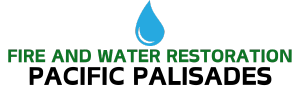Water damage is one of the most common and destructive issues that homeowners and property managers face. Whether it stems from a burst pipe, a leaking roof, flooding, or even high humidity, water damage can quickly spiral into a much bigger problem—mold. Mold not only damages your property but also poses serious health risks. Understanding how water damage leads to mold and what to do about it is essential to protect your home, health, and finances.
How Water Damage Leads to Mold Growth
Mold is a type of fungus that thrives in damp, warm, and dark environments. Its spores are virtually everywhere—floating in the air, lying dormant on surfaces, and waiting for the right conditions to grow. Water damage creates those perfect conditions.
Here’s how it happens:
Moisture Accumulation
When a structure experiences water damage, moisture seeps into walls, floors, ceilings, and furniture. Materials like wood, drywall, and insulation absorb water and hold onto it. Within 24 to 48 hours, this trapped moisture becomes a breeding ground for mold spores to multiply.
Lack of Ventilation
Poor airflow or closed-off areas like basements, crawl spaces, and attics tend to trap moisture, especially if the water damage is not immediately detected. This stagnant environment accelerates mold growth.
Organic Material Feeds Mold
Mold feeds on organic materials found in wood, paper, fabric, and even dust. Once water saturates these materials, mold spores begin to digest them, causing structural damage and producing a musty odor.
Common Places Mold Grows After Water Damage
Mold can grow almost anywhere in your home if there’s moisture present. However, it’s most commonly found in:
– Drywall and ceilings
– Carpets and rugs
– Basements and crawl spaces
– Behind walls or under flooring
– Bathrooms and kitchens
– Attics with poor insulation or roof leaks
If you see discoloration, warping, or smell a persistent musty odor, mold is likely present.
Health Risks of Mold Exposure
Mold doesn’t just pose a threat to your home—it can also affect your health, especially for those with allergies, asthma, or compromised immune systems. Some symptoms of mold exposure include:
– Nasal congestion
– Throat irritation
– Coughing or wheezing
– Eye or skin irritation
– Respiratory infections
In more severe cases, especially with prolonged exposure to toxic black mold (Stachybotrys chartarum), individuals may experience chronic fatigue, neurological issues, and more serious respiratory complications.
What to Do About Water Damage and Mold
The key to avoiding mold problems is acting quickly and effectively. Here are the steps you should take:
Identify and Stop the Water Source
Before you can fix the damage or deal with mold, you need to stop the source of moisture. This could mean shutting off a leaking pipe, repairing a roof, or fixing foundation cracks. If the water source isn’t addressed, mold will keep coming back.
Dry the Affected Area Immediately
Time is critical. Use fans, dehumidifiers, and open windows to increase ventilation and dry out the area. Remove wet carpets, rugs, and furniture to speed up drying. If the damage is severe, a professional water damage restoration company will have industrial-grade equipment to do the job faster and more thoroughly.
Inspect for Mold Growth
Look for visual signs of mold: black, green, or white spots on walls, ceilings, or materials. Pay attention to musty smells. In hidden areas like behind walls or under floors, you may need professional help to inspect with thermal imaging or moisture meters.
Remove Mold Safely
For small areas (less than 10 square feet), you can clean mold with commercial mold removers or a mixture of water and detergent. Wear gloves, goggles, and a mask to avoid exposure. Never paint over mold—it will continue to grow underneath.
For larger infestations, call a mold remediation specialist. They will isolate the affected area, use HEPA vacuums and air scrubbers, and safely remove contaminated materials. They’ll also advise on repairs or replacements for materials that can’t be salvaged.
Repair and Restore
Once everything is clean and dry, begin restoring the damaged areas. Replace drywall, flooring, insulation, or ceilings as needed. Apply mold-resistant paint or sealant to vulnerable areas, especially in basements or bathrooms.
How to Prevent Mold After Water Damage
While you can’t always prevent water damage, you can reduce the risk of mold with these practices:
– Fix leaks immediately
– Use exhaust fans in bathrooms and kitchens
– Install dehumidifiers in damp areas like basements
– Keep indoor humidity levels below 60%
– Regularly inspect plumbing, roofing, and seals around windows
– Consider mold-resistant drywall and insulation during renovations
Water damage and mold are closely connected—and equally dangerous if left untreated. The faster you act after water damage, the better your chances of preventing mold and avoiding costly repairs or health issues. By staying proactive and knowing when to call in professionals, you can protect both your property and your well-being.
If you’ve experienced recent water damage, don’t wait. Mold might already be on its way. Take immediate action and ensure your home stays safe, dry, and healthy.
